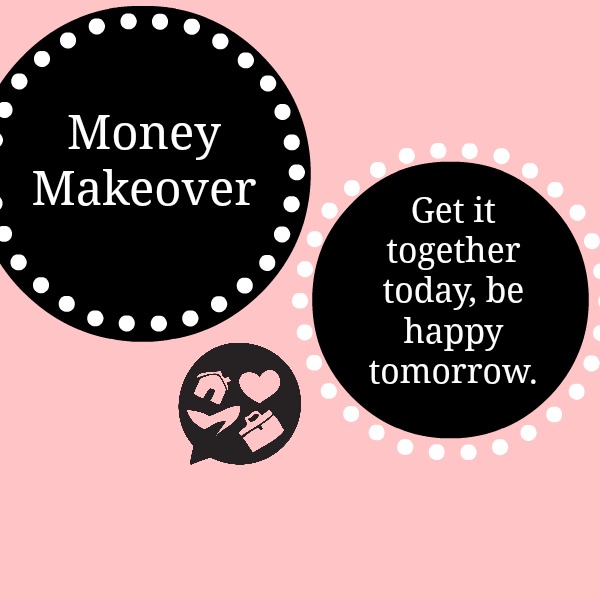Money Makeover Series: Future Financial Leader

When I first spoke with Pamela, she told me that she wishes she had learned about finances at an earlier age. Now she wants to learn more to become a financial leader to women everywhere. That’s a pretty admirable goal! Pamela’s words hit home with me as I too have been on a mission to help others avoid the many mistakes I’ve made. And with the rise of student debt in a tight job market, this topic is becoming more important than ever!
Now Pamela is ready got get started with optimizing her own financial situation. Due to a mortgage, a newish job with a slightly irregular income, and some consumer debt, Pamela and I decided to reorganize and re-strategize her finances before starting a budget. She’s already been doing a fantastic job of saving for retirement, so consumer debt payoff is the goal! Here’s what we plan to do to help make that happen faster:
Consolidate Debt
Owing even small amounts to more than one lender can get confusing for anyone. Not only that, it causes you to pay more interest than you have to, which can really add up in the long run. That’s why Pamela is pursuing debt consolidation. This will enable her to transfer anything outside of her mortgage onto one account, at a lower interest rate.
There are several ways to consolidate debt and – contrary to popular belief – you don’t need a “debt consolidation” company to help you. In fact, the majority of those companies end up being debt settlement or debt management companies, which come with a high risk. So how can you consolidate debt on your own?
- Credit card balance transfer
Shop around for a credit card which offers a promotional rate (typically 0% for 6 months to 1 year, depending on your credit score) and apply to transfer all of your other credit card balances onto this new card. Be careful not to make any purchases though! Purchases are charged a higher interest rate and even having the purchases on the new card can skew the way your payments are applied. Credit card balance transfers are a good option only for those who want the lowest interest rates possible – but trust themselves not to use the card for new purchases. - Home equity line of credit
If you own a home, you can take out a HELOC and use it to pay off your other debt. This is better than a credit card balance transfer if you’re not sure you trust yourself not to spend on the new card. The HELOC has a fixed rate and payoff date. One con to this is that your home becomes collateral on your debt – putting you at risk of foreclosure if you default on your payments. - Peer-to-peer loan
Peer-to-peer loans, such as those from The Lending Club and Prosper, give you the best of both worlds: they come at a much lower interest rate than credit cards and the rate and payoff date are fixed. You don’t run the risk of charging up more debt and there is no collateral on this loan. The con is that they don’t offer 0% interest rates, so you might get a lower rate with a credit card balance transfer. However, if you think you’re better off steering clear of credit cards, then the slightly higher rate is probably worth not having to open any new credit cards again.
Earn Extra Income
Once Pamela’s consumer debt is consolidated, she wants to do whatever she can to apply more money to her debt payoff. Since her current obligations don’t leave her a lot of room in her budget, she decided to look for ways to earn extra income.
I know what you might be thinking, but earning extra income doesn’t have to be a total drag, and just a little bit extra each month can have a tremendous difference on your debt payoff goals! One way to lessen the pain is to find work that you genuinely enjoy and that is convenient to your schedule.
In Pamela’s case, she noticed that her local bar (which is just blocks from her home) is always busy. She mentioned this to the bartender who promptly told her he agreed and that they’re hiring! Since she’d been a bartender before, she had the necessary skills, and she got the job! Now she will spend a couple nights a week working at a bar she already enjoyed hanging out in, while being able to get home in five minutes or less, and earning quite a bit of extra money to boot! Now that’s what I call a boost to your financial plan!
Debt Avalanche
To complete Pamela’s debt payoff plan, she’s going to start on what’s called the debt avalanche method. This method entails paying off your highest interest rate debt first. Some people prefer the debt snowball method, which is paying off your lowest balances first, because they like having those “wins” for motivation. But Pamela’s ready to fight her debt head on in the mathematically fastest way possible.
This avalanche method will be made even easier once her consumer debt is consolidated, and she has extra money from her side job to apply to these loans. Once her highest interest rate debt is paid off, the monthly amount she was paying on that will be applied on top of the minimum payment for the next highest interest rate debt – and so on until she’s debt-free. Hence, the name, avalanche!
A little bit of strategizing on your financial situation can go a LONG way. In Pamela’s case, this new strategy is going to turn her financial situation into something she can easily control and manage. Need a little help strategizing your own finances? Tell us your story in the comments below and I’ll be happy to reply with some pointers!

